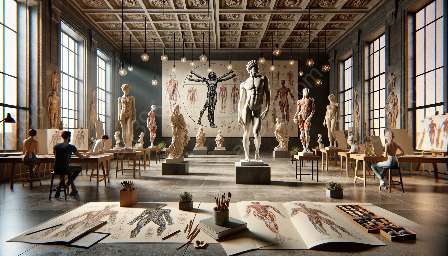Animation is a form of visual storytelling that has dramatically evolved with the integration of cutting-edge technologies. One crucial aspect that has greatly enhanced the authenticity and believability of animated characters and their movements is the understanding of anatomy and the use of motion-capture technology.
The Role of Anatomy in Animations
Anatomy plays a pivotal role in animation as it brings to life the characters and their movements, making them not only visually appealing but also realistic. Understanding human and creature anatomy allows animators to create characters that move and emote in ways that mimic real life, capturing the intricacies of human motion and expressions.
By comprehending the skeletal structure, musculature, and proportions of the human body, animators can infuse their characters with a sense of weight, balance, and physicality. This knowledge ensures that characters move in a way that is consistent with the laws of physics, making their actions more compelling and relatable to the audience.
Artistic Anatomy
Artistic anatomy delves deeper into the aesthetic aspect of anatomy, focusing on creating visually captivating characters while maintaining anatomical accuracy. It involves studying the human form from an artistic perspective, exploring the lines, curves, and intricate details that define the human body.
Artistic anatomy not only aids in creating characters that are visually striking but also contributes to the storytelling aspect of animation. By understanding how muscles and bones interact during movement, animators can convey emotions and personality through the subtle nuances of a character's gestures and expressions.
Motion-Capture Technology and Animation
Motion-capture technology has revolutionized the way animators bring characters to life on screen. By employing specialized cameras and sensors to track the movements of human actors, animators can capture realistic and nuanced performances that serve as the foundation for animated characters.
This technology enables animators to record the fine details of human motion, providing a level of authenticity that would be challenging to replicate through traditional keyframe animation. With motion-capture data, animators can intricately map the movements of characters to match the subtle nuances of human gestures and expressions.
3D Modeling and Character Animation
3D modeling and character animation further leverage the understanding of anatomy and motion-capture data to create lifelike and expressive characters. Through 3D modeling, animators meticulously sculpt and texture digital characters, taking into account anatomical principles to ensure accuracy and realism.
Character animation then harnesses the motion-capture data combined with the artistry of animators to breathe life into the virtual characters. By integrating anatomical knowledge and motion-capture technology, animators can deliver performances that are both artistically captivating and anatomically precise.
The Marriage of Science and Creativity
The fusion of anatomy and motion-capture technology in animation represents the harmonious blend of scientific understanding and artistic expression. It allows animators to tap into the intricacies of human and creature anatomy, infusing their characters with a sense of vitality and authenticity that resonates with audiences.
Moreover, it empowers animators to push the boundaries of creativity by imbuing their characters with lifelike movements and emotions, elevating the storytelling potential of animation to new heights.

